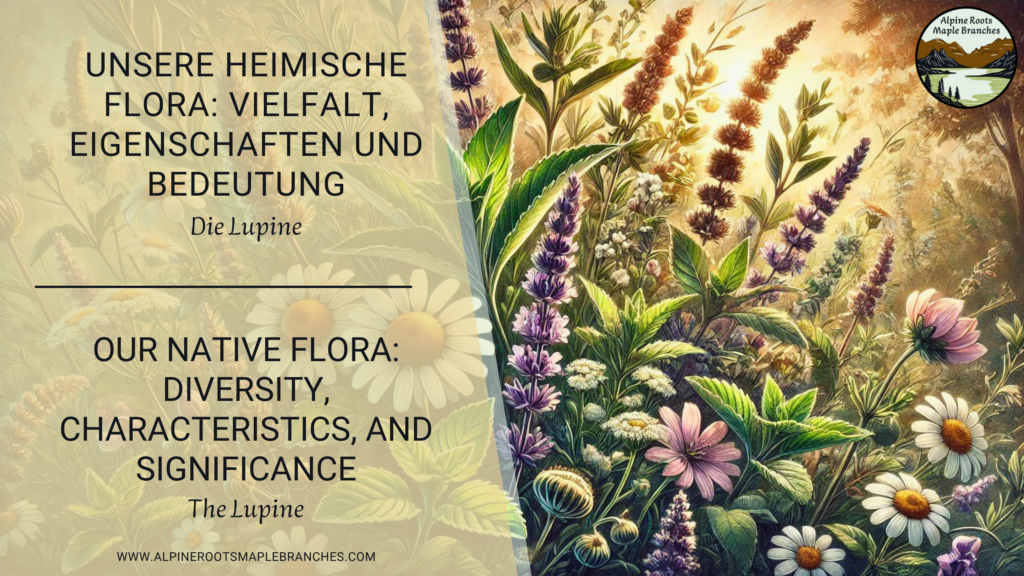
The lupine is a versatile plant that has found its place both as an ornamental plant and in agriculture.
Name:
German: Lupine
English: Lupine
Latin: Lupinus spp. (Lupinus albus, Lupinus luteus, Lupinus angustifolius)
Plant Group / Family:
Family: Fabaceae (Legumes)
Subgroup: Papilionoideae (Pea family)
Distribution:
Native Origin: North and South America
Current Distribution: Worldwide, especially in temperate climates
Identification:
Height: 30–150 cm
Leaves: Palmately compound with 5–15 lanceolate leaflets
Flowers: Spike-like clusters with colors ranging from blue, purple, white, yellow, to red
Fruit: Pods containing 3–12 seeds
Bark/Stem: Upright, often slightly hairy stems
Uses:
Medicinal: Lupine species are rarely used in traditional medicine.
Culinary: Some species, especially bitter lupine, contain toxic alkaloids and are not suitable for consumption.
Decorative: Often used as ornamental plants in gardens and parks.
Other:
- Green manure
- Improvement of soil quality through nitrogen fixation
Toxicity:
Toxic Parts: All parts of the plant, especially the seeds, contain quinolizidine alkaloids, which are toxic.
Symptoms: Nausea, vomiting, diarrhea, breathing difficulties, in severe cases, respiratory paralysis.
First Aid: In case of poisoning, seek medical help immediately. Do not give milk or other drinks, as they may enhance absorption.
Look-alike Species:
Similar Plants: Sweet Lupine
Differences: Sweet lupines have been bred to contain fewer toxic alkaloids.
Additional Information:
Care: Undemanding but prefers sunny locations and well-drained soil. Water regularly, especially during dry periods.
Growing Conditions: Prefers sunny to semi-shaded locations, tolerates various soil types, but dislikes waterlogging.
Caution: Lupines improve soil quality through nitrogen fixation, making them ideal for crop rotation.
Decorative
Ingredients:
- Lupine seeds
- Garden soil
- Water
Preparation:
- Sow the seeds directly outdoors in spring or autumn.
Application:
Water and care for the plants
Notes: Lupines attract pollinating insects and are ideal for natural gardens.
Soil Improvement
Ingredients:
- Lupine seeds
Preparation:
- Sow the seeds into the soil that needs improvement and let the plants grow.
Application:
- After flowering, plow the plants into the soil.
Notes: This method increases the nitrogen content and improves soil structure.
Medical Disclaimer
The recipes and information provided here are for informational purposes only and do not replace the advice of a doctor or medical professional. If you have any health concerns or uncertainties, always consult a physician.
